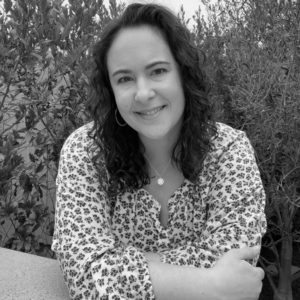Explaining the Research: What Will It Take to Cure Diabetes?
Editor’s Note: This interview was created in partnership with JDRF through the JDRF – Beyond Type 1 Alliance.
People with type 1 diabetes have heard that a cure is five or 10 years away for many years. This moving target and lack of clarity into what’s happening behind the scenes has left many people in our community feeling frustrated.
The scientific understanding of type 1 diabetes (T1D) has progressed by leaps and bounds in recent decades, turning what once seemed impossible because it has never been done—curing an autoimmune disease—into a possibility. The next steps include turning accumulated knowledge into actionable solutions. And potential solutions are being tested in people right now.
JDRF is the leading global organization funding T1D research. While a large part of their work is in accelerating better treatments for and potentially slowing or preventing the onset of T1D, the majority of their research focus and research dollars) is on potential cures for T1D, with a goal of ending the disease entirely. JDRF Chief Scientific Officer Sanjoy Dutta explains the current state of research on diabetes cures and how we’ve gotten here.
Here are a few significant developments in what we understand about T1D from the last 30 years:
- It’s not just a childhood-onset disease (the former name of ‘juvenile diabetes’ is a misnomer); half of newly diagnosed individuals are adults.
- If you have an immediate family member with T1D, you have a 15x higher chance of developing it. However, 85 percent of people who are newly diagnosed have no known family history of T1D.
- T1D is more prevalent in certain ethnic groups.
- There are more than 50 genes known to have some impact on T1D.
Diabetes is complex
There’s no single known cause for T1D, and that leaves many questions open as to how to best treat, cure or even prevent it.
Dutta explained that researchers are looking at non-genetic factors that may contribute to T1D, like environmental triggers, viruses and even gut microbiota.
It’s hard to study these factors since T1D isn’t typically diagnosed until a person’s body has stopped or significantly reduced producing insulin, even though the disease starts long before insulin production stops.
“This often makes type 1 diabetes a very challenging disease to study,” Dutta said. “It is asymptomatic and precipitates in an individual without much forewarning.”
Screening for T1D is available and can identify the early stages of T1D before it becomes symptomatic. However, childhood screening is not yet standard clinical practice.
Early detection and monitoring would help researchers study the disease’s progression before a person is showing the warning signs of T1D.
Expanding our understanding of T1D and cures
Despite this, scientific understanding of T1D has advanced significantly. This shift in understanding diabetes has changed how the scientific community approaches T1D research.
This understanding has “led us to focus on different pathways of curing the disease. That’s why we often refer to them as cures because we don’t think it will be a one size fits all.”
Some researchers even suggest that what is referred to as T1D may be several different diseases with similar and overlapping symptoms, Dutta said. Just as we used to think T1D only developed in children, our current understanding of diabetes may also continue to evolve.
“No two individuals with type 1 diabetes are the same—sometimes even two siblings present very, very differently with type 1 diabetes,” Dutta said. “This heterogeneity of type 1 diabetes has made it very difficult to attack it with one therapy that’s going to work for everyone.”
Two major areas of focus in diabetes research
One of the exciting areas of cures research JDRF supports is cell replacement therapy, like the treatments being developed by ViaCyte and Vertex Pharmaceuticals that are currently in clinical trials.
“Instead of trying to solve the immune problem in the body and regrow the beta cells in the body, we make the cells outside the body and try to implant them into the body.”
Beta cell replacement therapy aims to replace the cells that have stopped producing insulin in people with T1D. While this therapy does not restart the body’s ability to produce insulin using its own cells, it does allow insulin to be produced in the body using the transplanted cells. This is referred to as a functional cure.
Research on stem cell-derived cell replacement therapy has come a long way in the last 20 years.
“We know how to make the beta cells outside the body and we can make them in billions of quantities for many people with type 1 diabetes… islet transplantation and pancreas transplantation from donor cadavers have taught us that we can cure the disease through transplantation.”
Cell replacement therapy currently requires immunosuppression (drugs that keep the body’s immune system from attacking the transplanted cells) but research is ongoing to develop cell replacement therapies that work without the need for immunosuppression.
Another area of focus for JDRF is on the underlying pathology of T1D—meaning learning how to identify and address its causes. This could mean halting, slowing or reversing the causes of T1D.
“It’s a dual-pronged approach—to reset the immune balance and regrow beta cells,” Dutta said.
These treatments are called disease-modifying therapies. One drug, teplizumab, has been shown to delay the onset of type 1 diabetes for people who have the autoantibody markers of the disease. It is currently under FDA review.
Clinical trials take a long time
Numerous beta cell replacement therapies have reached the clinical trial phase. But trials for these treatments take a long time.
“It takes six to 12 months of treating an individual with a drug to see a small change in beta cell production. That is if the drug works.
“There are many diseases where you can do a clinical trial and you can get a readout in 30 days’ time, in 60 days’ time. You can move faster and also have many horses in the race,” Dutta said.
Clinical trials for experimental T1D treatments don’t work like that. This long—and sometimes frustrating—process is the subject of the newly debuted documentary, “The Human Trial.”
Money fuels research
On average, it takes 15 years and $1.5 to $3 billion to develop a drug and make it available to consumers—and that’s for a “normal drug,” Dutta pointed out.
“Research may feel incremental because research is slow in drug development.”
About 85 to 99 percent of experimental treatments fail, meaning less than one out of ten ideas is going to be effective.
“And so these will take time, will take significant resources, will require lots of clinical trials, lots of human participation there. These are the challenges of drug development.”
JDRF has established an innovative venture philanthropy fund, the T1D Fund, aimed at accelerating T1D research, with a major focus on T1D cures. The goal is to accelerate diabetes research and scientific breakthroughs.
Looking toward the future of cures research
Dutta acknowledges the lack of breakthroughs may feel frustrating.
“Are people with diabetes where they would like to be? Absolutely not. They want to be off their devices. They want to be off carb counting. They want to be insulin-free. And we’re not there yet.”
Taking a long view, Dutta keeps perspective on where advancements have been made and where things are headed.
Diabetes care and diabetes technology are advancing rapidly. Automated insulin delivery systems and continuous glucose monitoring have changed daily life for many people with T1D, though more people need access. Hyperglycemia and rates of diabetes-related complications have gone down, Dutta points out.
“People now are becoming pilots, swimmers, athletes, truck drivers and other things that they were not able to even dream of 10, 15 years ago. So, that gives me hope,” Dutta said.
Dutta is confident scientific understanding of diabetes will continue to accelerate and that there is reason to be hopeful for new advances and breakthroughs in the science and treatment of T1D.
“It will feel incremental, but we just need to turn the corner once—and I think…the floodgates will open because then we will prove to ourselves that we can do it.”





